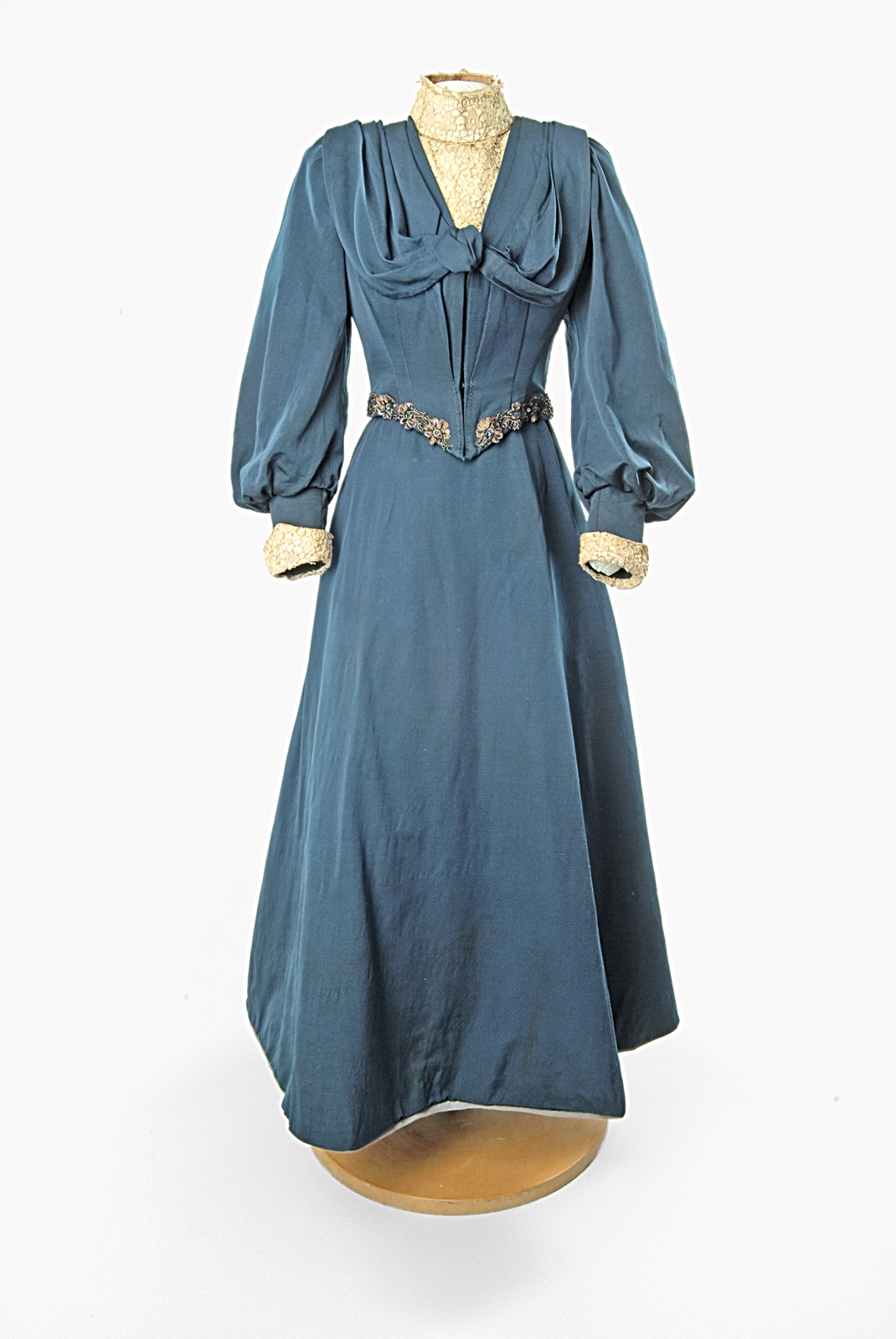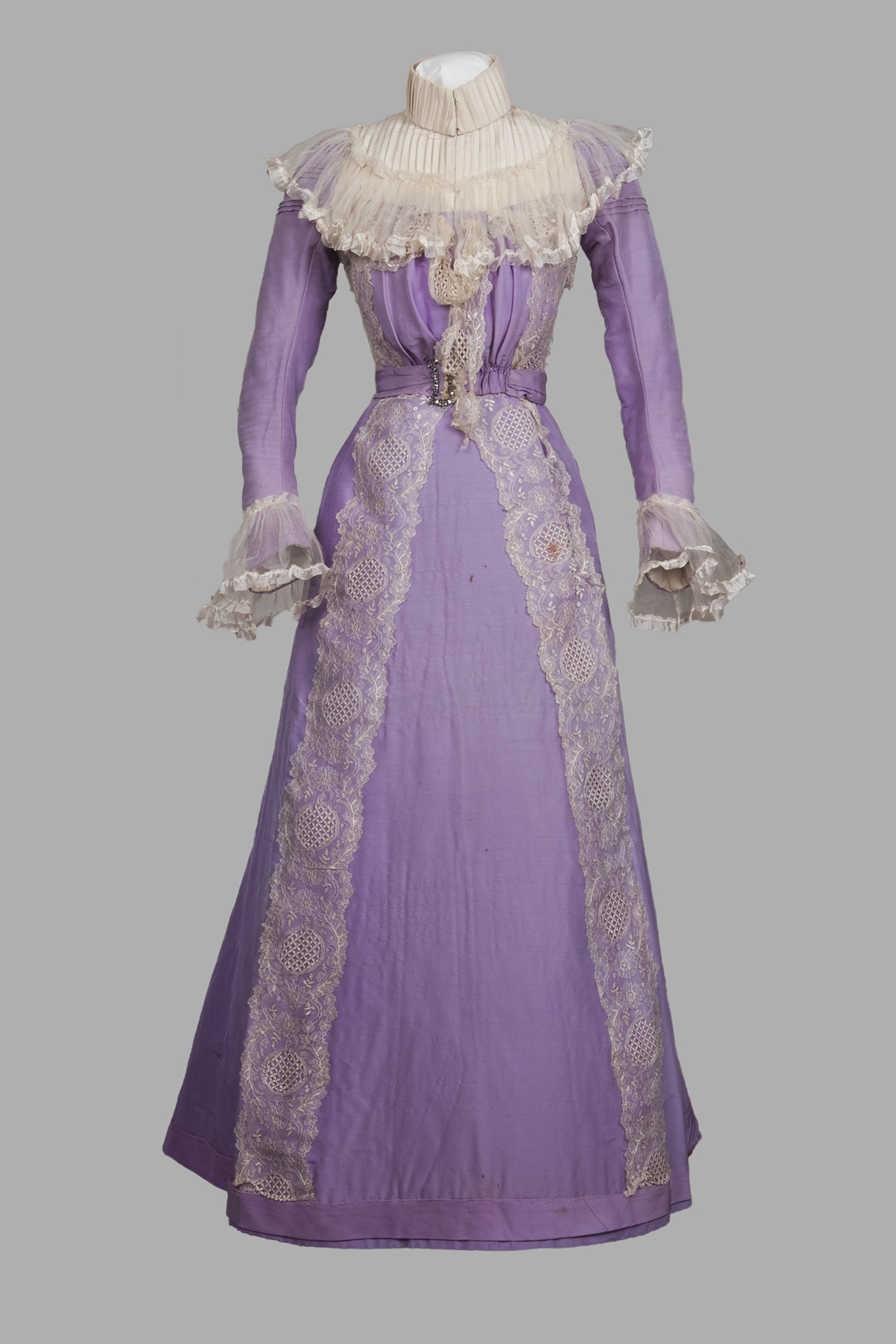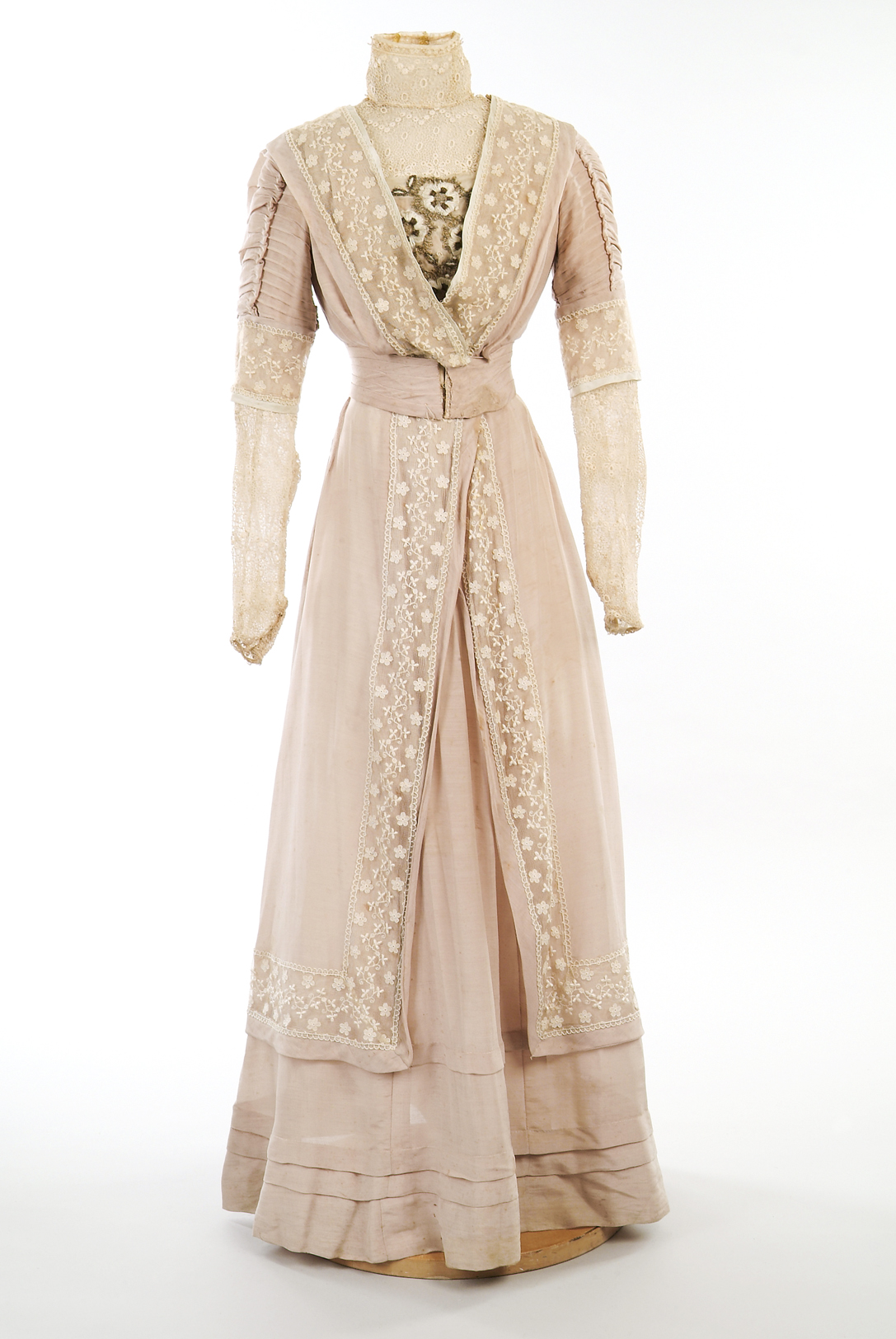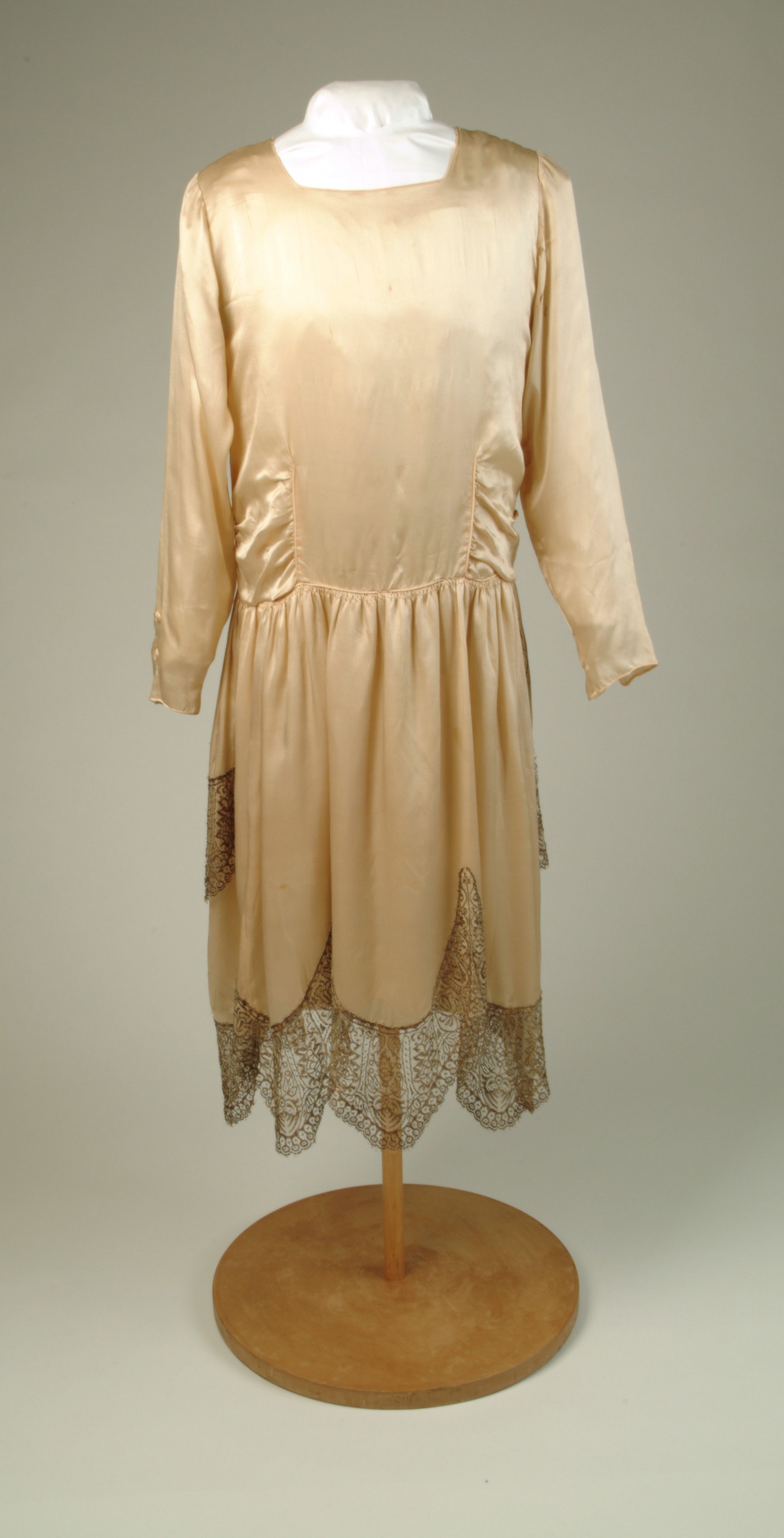- youtube
- bluesky
- Home
- About
- Costume Journal
- Membership
- Conference & Events
- Grants & Awards
- News & Social
In this week's blog, MWEG winner 2019 Ainize Moschynski reflects on her placement reviewing Aberdeen Archives, Gallery & Museums's historic wedding dress collection.
My interest in costume was initially sparked in Australia, during my studies of Fine Art, where I completed a subject on sewing and another one on the use of sustainable dyeing techniques in textile production.
I later moved to the UK and graduated with an MA in Art History in 2018. My degree developed my interest in textiles further. I wrote my masters dissertation on Goya's cartoon designs for tapestries. This paper allowed me to research the weaving techniques of eighteenth-century Spain and highlighted the often-overlooked importance given to costume and textiles by artists working in different mediums.
I was extremely excited to be awarded the Costume Society’s Museum Work Experience Grant 2019 whilst volunteering at Aberdeen Archives, Gallery & Museums (AAGM). The award generously supported my work whilst reviewing AAGM’s historical wedding dress collection.
Jenna Rose, the curator in charge of the project and I conducted the review at the Treasure Hub, which is AAGM’s museum store. The first thing I had to learn was how to use TMS, the museum’s cataloguing system. Once familiar with it, I could start evaluating the collection in earnest.
We started off by creating object lists which grouped items used by the bride on her special day. Making lists helped us better visualise the wedding, and more importantly, the bride’s personality.
The review of an object was very systematic, and a lot of fun. We got the item from its hanging space or drawer, lay it flat on a Tyvek-covered work surface and looked at it in detail: we photographed it, we measured it, we analysed its overall condition, we created a valuation report for it, and we read about its history: from who wore it, to who donated it and everything in between.
Some objects had fascinating histories; others didn't even have a wearer's name attached to them. With all this information (or lack of it), we created a detailed catalogue entry which will later help curators assess whether an item should be kept in the museum's collection or if it should be disposed of.
One thing we quickly realised as we worked with the collection is not only the lack of male wedding attire, but also the lack of costume representation of LGBTQ+ weddings, ethnic minority weddings, international weddings, and all other wedding dress that may not fall under the 'white Anglo-Saxon heterosexual couple' umbrella. This is an important point that our review has raised. But it also goes further in highlighting the importance of collection reviews in general. They allow curators to make fairer decisions about what and how to collect to make the museum space more inclusive and relevant to future generations.
One of the highlights of the placement was going to a two-day 'Woven Textile Identification' workshop held at the Glasgow Museums Resource Centre. The workshop was facilitated by DATS (Dress and Textile Specialists) and was run by Mary Schoeser, School of Textiles with the help of Rebecca Quinton, Glasgow Museums. Mary brought all sorts of beautiful textiles to the workshop for us to touch, analyse and research. It was a crucial learning experience for me, a fabulous eye-opener. We were very lucky to be able to attend this event just days before the March 2020 Covid-19 lockdown.
During lockdown, and now working from home, Jenna and I collated as much information about our review as possible. We wrote a blog and an article for the local newspaper and shared our review with the public in a week-long ‘Wedding Dress Social Media Takeover’ on AAGM’s Facebook and Twitter pages.
A heartfelt Thank You to the Costume Society and Aberdeen Archives, Gallery and Museums for this opportunity. Receiving the MWEG was crucial in expanding my knowledge about textiles, costume, and working with a museum collection that is an important part of our city's history.
Ainize Moschynski is a Museum Assistant, at Aberdeen Archives, Gallery & Museums.
Image gallery

Blue Corded Silk Wedding Dress, 1896, corded silk, satin, lace and metallic thread, courtesy Aberdeen Archives, Gallery & Museums

Lilac and Ivory Wedding Dress, 1900, corded silk, chiffon, lace, silk, cotton and marcasite, courtesy Aberdeen Archives

Embroidered Silk Wedding Dress, c.1909, silk and lace, courtesy Aberdeen Archives, Gallery & Museums

Silk and Lace Wedding Dress, 1927, silk, lace and metallic thread, courtesy Aberdeen Archives, Gallery & Museums

Utility Scheme Wedding Dress and Slip, 1942, polyester satin, courtesy Aberdeen Archives, Gallery & Museums

Cream Silk Wedding Dress, 1969, silk and polyester, courtesy Aberdeen Archives, Gallery & Museums